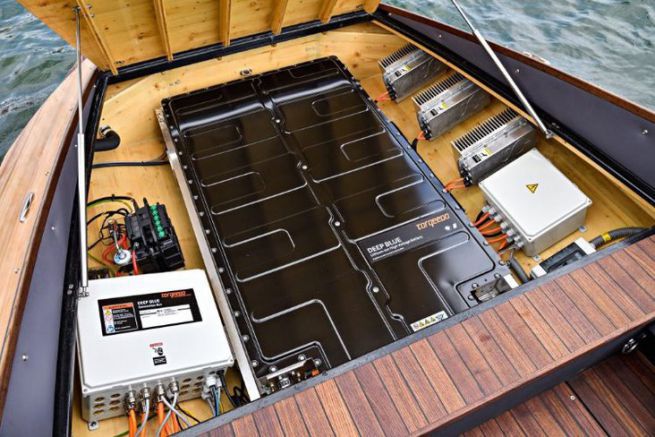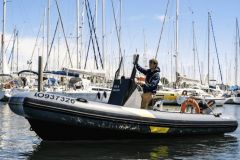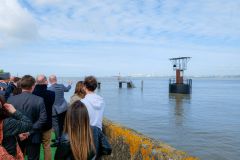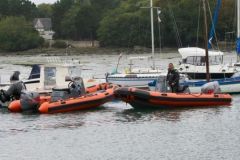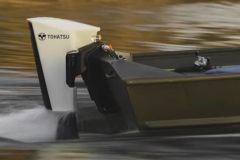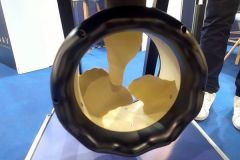In contrast to hybrid propulsion, which is an electric propulsion system that can be powered either by generators or by rechargeable batteries on shore or at sea, "pure" electric propulsion has electric accumulators (the batteries) as its sole energy source, with no other means of recharging than to return to the port.
Seen from this angle, everything seems simple, but different constraints disturb and complicate the approach to make it the unique solution for the propulsion of a boat.
The weight estimate
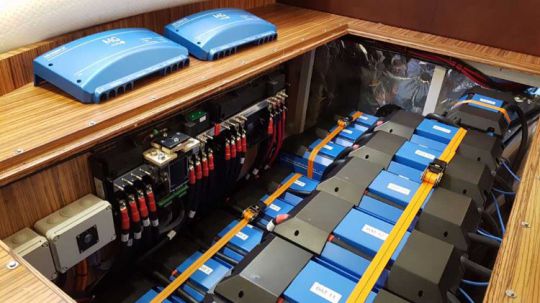
First of all, for the same weight, a conventional fuel offers more energy than batteries, however efficient they may be, and therefore for the same range, the weight on board will be greater in electric propulsion (if we do not take into account the engine, which will be heavier for an internal combustion engine than an electric motor).
For the same hull in order to maintain performance and autonomy, it is therefore necessary to increase the number of batteries with a significant impact on the weight on board, which can lead to a modification of the hull structure with again an additional impact on the weight.
Electric propulsion is therefore not necessarily suitable for planing hulls, as the weight specification is a decisive criterion for this type of hull.
A French boat builder claims to have tested different solutions, unfortunately none of them have given satisfaction for "powerboat" boating as we practice it today. That is, fast boats that go fast.
Recharging time
Secondly, the battery recharging time compared to a tank filling is also more favourable for the thermal version.
What is the interest of an electrically-powered boat for pleasure boating?
As environmental regulations are becoming more and more stringent and demand to be environmentally friendly, zero-emission is sometimes imposed. Electric propulsion is not a choice, but becomes an obligation and the yachtsman will have to comply with the constraints associated with this method of propulsion.

At the Dusseldorf Boat Show 2020, a concept boat, the Candela7, with electric propulsion was presented, integrating technologies to limit hull resistance: carbon, foil, lithium batteries... The manufacturer claims to present the fastest electrically-powered pleasure boat with the longest range.
Unfortunately, consumer leisure use is limited. The usage program is still quite small. Conventional pleasure boats still seem to be at the antipodes of use adapted to electric propulsion.
That leaves the professional boats
However, for professional use that does not require too much autonomy or a high speed of displacement, electric propulsion is adapted on condition that a specific hull study is accepted to optimise efficiency and have a larger budget than with an internal combustion engine.

At Düsseldorf 2020, several boat builders presented electric-powered concept boats such as the Q Yacht eLimo, which has been designed and developed for passenger transport use as a taxi boat, shuttle or yacht tender.
The future?
Among the "zero-emission" solutions, the fuel cell is one, already used by some car manufacturers and tested since 2017 by the Energy Explorer Challenge (Toyota fuel cell): a floating laboratory whose mission is to test and optimize on-board technologies, in particular renewable energies aimed at energy autonomy. The program is spread over several years, so let's stay tuned.

